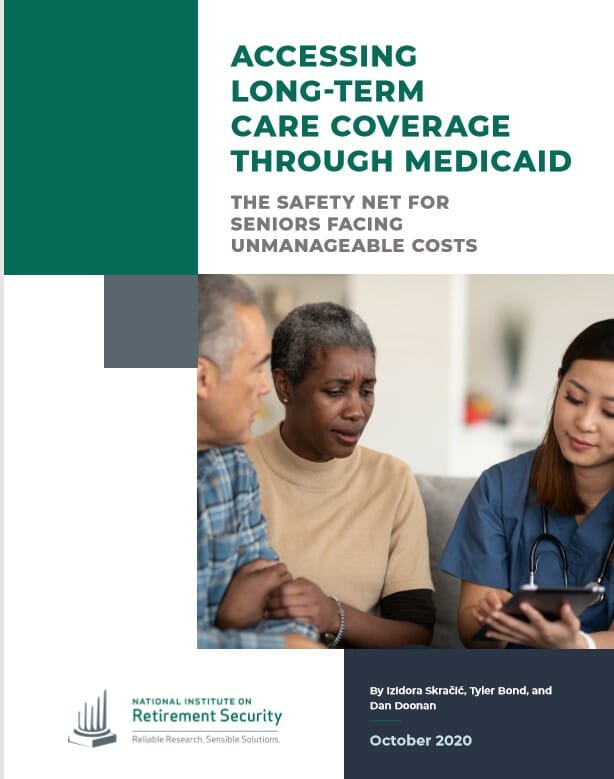Focusing more on home- and community-based services such as those provided in some assisted living communities, rather than on institutional care such as that provided in nursing homes, is one way that state and federal policymakers can address the “potentially catastrophic costs” of long-term care, according to a new report by the National Institute on Retirement Security.

HCBS, according to the Washington, D.C.-based nonprofit research and education organization, generally are more cost-efficient and preferred by beneficiaries and their families.
According to the report, “Accessing Long-Term Care Coverage Through Medicaid: The Safety Net For Seniors Facing Unmanageable Costs,” 69% of seniors will require some type of long-term services and supports, but retirement income and savings often are inadequate to cover the cost.
“Today, few individuals, employers or government have a plan in place to finance seniors’ long-term care needs, even as the cost of services is increasing,” NIRS Executive Director Dan Doonan said. “As a result, too many older Americans are forced to spend down their savings so they can qualify for long-term care under Medicaid. This is an expensive, overly complicated and inhumane approach.”
Other recommendations in the report:
- Long-term care proposals should provide universal coverage based on need.
- A stronger focus on healthy aging should include the integration of healthcare and social services and accountable care systems focused on long-term — not short-term — health.
- The ability of older adults to remain in their communities and live independently should be facilitated by expanding aging-friendly communities, transportation infrastructure, affordable and accessible housing, community nutrition programs and strong public institutions.
A webinar on the findings will be held Oct. 21 at 2 p.m. ET.




